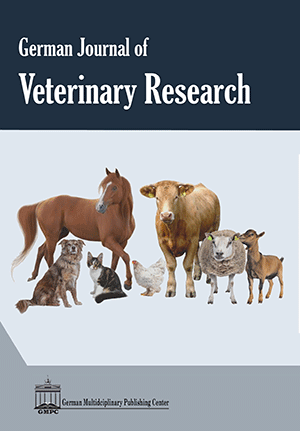Ver ítem
- xmlui.general.dspace_homeCentros Regionales y EEAsCentro Regional Entre RíosEEA Concepción del UruguayArtículos científicosxmlui.ArtifactBrowser.ItemViewer.trail
- Inicio
- Centros Regionales y EEAs
- Centro Regional Entre Ríos
- EEA Concepción del Uruguay
- Artículos científicos
- Ver ítem
Strategies to attack pathogenic avian microorganisms: from probiotics to postbiotics
Resumen
To reduce the growing risk of antimicrobial resistance, there is an increasing demand to substitute synthetic antimicrobial growth promoters in animal production with safer natural chemicals or biological alternatives. Therefore, this chapter will focus on the use of probiotics, prebiotics, synbiotics, and postbiotics in poultry production. Probiotics are live microorganisms that, when administered in adequate amounts, confer a health benefit on the host.
[ver mas...]
To reduce the growing risk of antimicrobial resistance, there is an increasing demand to substitute synthetic antimicrobial growth promoters in animal production with safer natural chemicals or biological alternatives. Therefore, this chapter will focus on the use of probiotics, prebiotics, synbiotics, and postbiotics in poultry production. Probiotics are live microorganisms that, when administered in adequate amounts, confer a health benefit on the host. Prebiotics are considered a substrate that is selectively utilized by host microorganisms, conferring a health benefit. They are thought to be hydrolyzed and then used by the gastrointestinal tract bacteria found in different parts of the avian gastrointestinal tract because they have been described as indigestible by the host. There are five categories of prebiotics: fructans, galactooligosaccharides, starch and glucose-derived oligosaccharides, other oligosaccharides, and non-carbohydrate or miscellaneous like cocoa-derived flavanols, polyphenolics, fatty acids, herbs, and other supplements. The most often used prebiotics in poultry include fructo-oligosaccharide, mannan-oligosaccharides, and galacto-oligosaccharides. A synbiotic is a mixture comprising live microorganisms and substrate(s) selectively utilized by host microorganisms, conferring a beneficial effect. There are complementary and synergistic synbiotics. In chickens, synbiotics can be supplemented in feed or water or injected in ovo to expedite colonization of the gut by beneficial bacteria. Finally, postbiotics are considered inactivated microbial cells or cell components, with or without their metabolites, that provide health benefits. Many existing postbiotics include inanimate strains belonging to established probiotic taxa within some genera of the family Lactobacillaceae or the genus Bifidobacterium. Postbiotics are composed of food-grade microorganisms or released after cell lysis in complex microbial cultures, food, or the intestinal lumen. All these products help support a healthy gut and immune system in poultry.
[Cerrar]

Autor
Bueno, Dante Javier;
Latorre, Juan David;
Shehata, Awad A.;
Eisenreich, Wolfgang;
Tellez-Isaias, Guillermo;
Fuente
German journal of veterinary research 4 (1) : 95-118. (2024)
Fecha
2024
ISSN
2703-1322
Formato
pdf
Tipo de documento
artículo
Palabras Claves
Derechos de acceso
Abierto
 Excepto donde se diga explicitamente, este item se publica bajo la siguiente descripción: Creative Commons Attribution-NonCommercial-ShareAlike 2.5 Unported (CC BY-NC-SA 2.5)
Excepto donde se diga explicitamente, este item se publica bajo la siguiente descripción: Creative Commons Attribution-NonCommercial-ShareAlike 2.5 Unported (CC BY-NC-SA 2.5)


